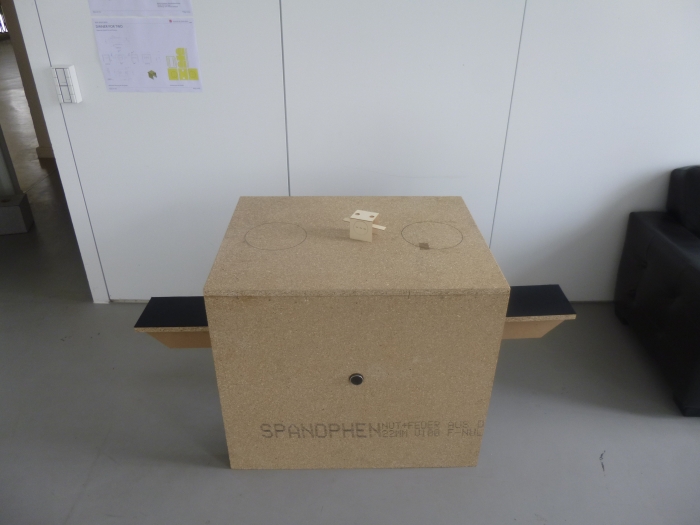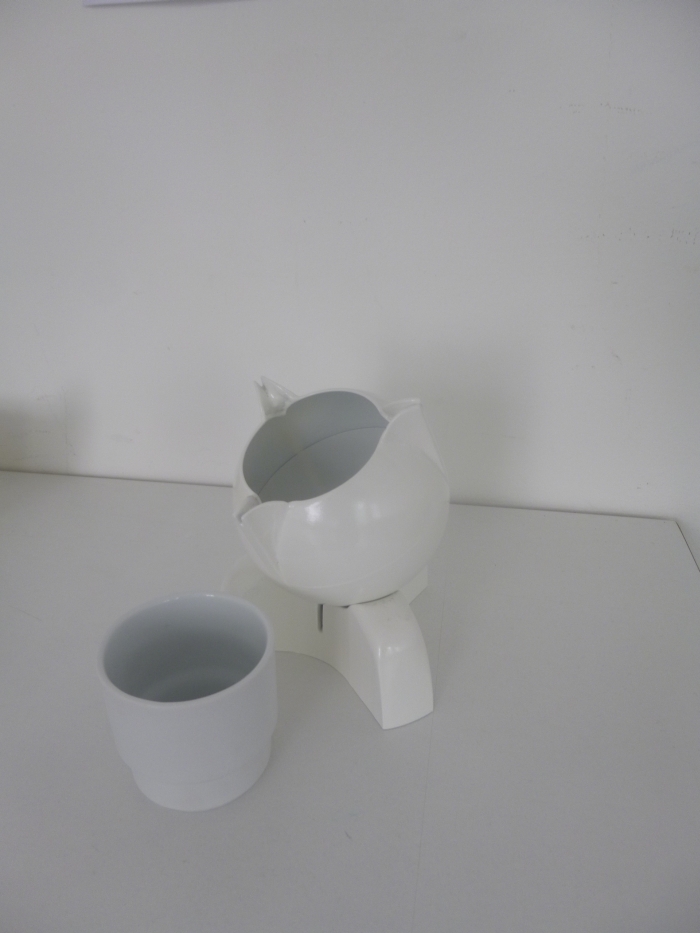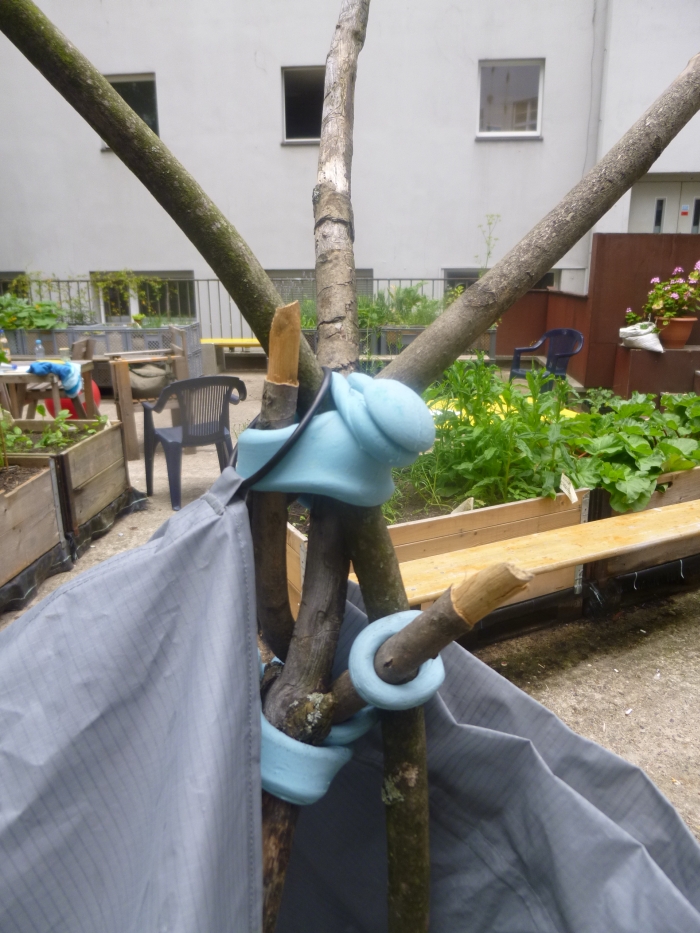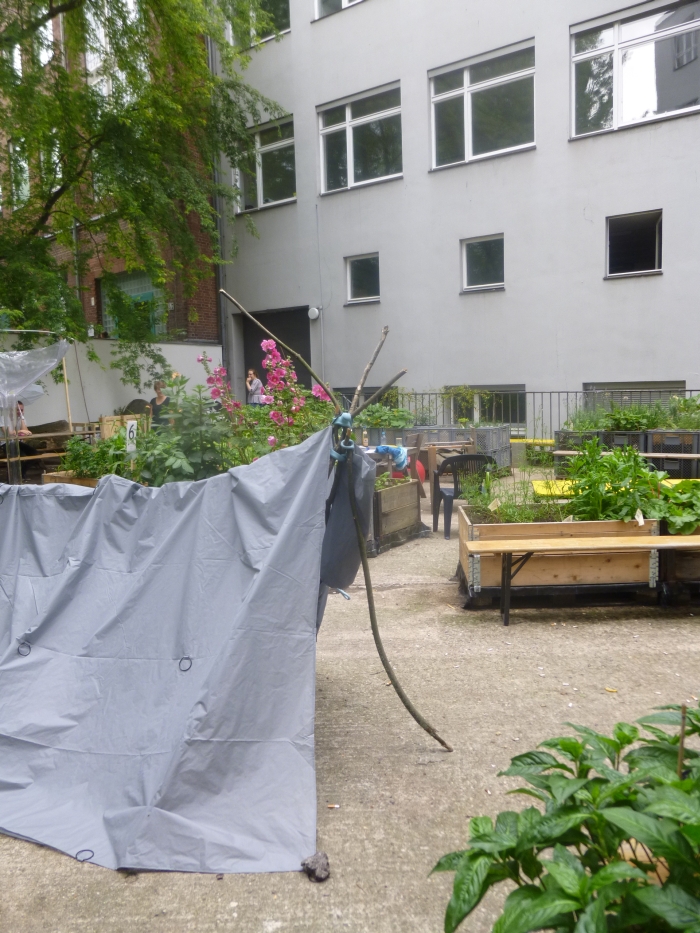Universität der Künste Berlin: Rundgang 2015
It is probably fair to say that over the years and decades the Universität der Künste Berlin, UdK Berlin, has produced the majority of the more interesting and important Berlin designers. Whereas historically that was largely on account of the lack of alternatives; today the school has responded to the increasing competition by employing good sensible teaching staff who set the students good sensible semester projects and also give them the freedom to develop their own individual projects as they see fit. Good. Sensible. Or otherwise.
Such can be clearly observed at the 2015 Rundgang end of year exhibition.
By no ways a classic year, as with the recent Summaery 2015 at Bauhaus University Weimar several of the “standard” classes which are usually good, weren’t, and a lot of the free projects lacked any real conviction or well founded basis, too often we found ourselves not so much asking why a project had been developed but rather being asked to provide moral support for the project as it struggled with its own identity crisis. Who I am ? Why am I here? 42???? They cried. Answers we had none. Save that they were born innocent and free.
That said there were still a few projects that caught our attention.
Should you be in Berlin this weekend the UdK Rundgang 2015 can be viewed at various locations until 8pm on Sunday July 19th. What follows here concerns solely the design department,in addition the UdK Rundgang 2015 presents student works from the faculties of art, architecture, music, fashion, et al
Full details can be found at http://www.udk-berlin.de
Dinner for Two by Philipp Hainke
Because as a species we have an innate hang to kitsch and the soulless, our world is becoming ever more swamped by senseless electronic rabbits, flowers, cats and aliens which let you know when a loved one from who you are currently geographically far removed, is online. The flower blooms. The cat waves. The alien bleeps. Joy of joys, my darling is checking their social media updates. Digital closeness ensues. Dinner for two by Philipp Hainke is the analogue version of that, allowing as it does for non-verbal communication and a sense of spiritual togetherness over a distance of 1 meter.
And is all the more delightful, practical, interesting and endearing for it.
Created in context of the Hot Spots seminar Dinner for Two is a sea-saw with a table in the middle thus allowing for a convivial meal for two where the regular spheres for communication are added to by a continual, unpredictable movement induced by your dining partner. Not only does such allow for a direct instantaneous unspoken interaction between the two protagonists, but also forces you to consider the other. Who is heaviest? Tallest? Is it OK if I move now? Do they want me to move? Do I trust him/her? Why doesn’t he/she trust me?
And not that the meal need be convivial, a frosty, ill-tempered meal takes on a whole new character, enters unknown territories of theoretical cruelty, when your seating is physically linked.
Nor need a meal be involved. Quite aside from the thought of what would have happened had Anatoly Karpov and Viktor Korchnoi had such a set up for their 1978 World Chess Championship “encounter”, Dinner for Two obviously becomes especially interesting as alcohol intake increases and perceived stability decreases.
A genuinely delightful concept we can image Dinner for Two working particularly well in public spaces as picnic tables. Or in the United Nations canteen.

Dinner for Two by Philipp Hainke, as seen at the Universität der Künste Berlin Rundgang 2015
TEA43 by Dennis Nguyen
Although Dennis Nguyen conceived and designed TEA43 for the subtle and refined ritual of tea drinking, we can’t help mentaly filling the porcelain vesicle with beer. Sorry, it’s just the way we are, and we are far too old and stubborn to change. TEA43 is pronounced “Tea for three” and is intended as a tea pot for enhancing the communal tea drinking experience. The stand on which the pot rests contains a tea light to keep the tea warm and the tea can be poured from any “side” and in any direction. However for us as a concept for tea TEA43 simply doesn’t work. The pouring process is wrong, one doesn’t need three spouts, one needs one. But for beer, as a central feature on a beer garden table. Perfect. Maybe using the joint system developed by Eric Wester for his criminally overlooked Standing Task Light and then you have a pitcher that pitches. But doesn’t fall over. And yes, as an alternative one could also add water, say on a restaurant table or a family dining table.
Which isn’t to say we don’t like or appreciate the work Dennis Nguyen put into the project, we do. A lot. It’s a well considered and reasoned project. We just feel an alternative conclusion could/should have been reached.
But as ever, what do we know.

TEA43 by Dennis Nguyen, as seen at the Universität der Künste Berlin Rundgang 2015
Knot a Tent by Christine Oehme & Pauline Schlautmann
A tent is in essence a very simple object. Knot a Tent is an even simpler object, and a delightful pun.
Developed by Christine Oehme and Pauline Schlautmann in context of the 2nd semester class “Fluss or Regen” – River or Rain – the essence of Knot a Tent is a silicon connector, visually reminiscent of a bow tie or an abstract femur bone, and which can be used to secure any number of sturdy sticks as a tripod, and thus be used to construct a makeshift tent.
Why not just use a piece of rope? ask the clever kids at the front of the class.
A question to which we have no convincing or truthful answer, other than Knot a Tent offers an advanced version of the classic rope in a more compact and easier to transport form crafted from a material which isn’t likely to deteriorate over time or rain and whose operation involves no mastery of the black art of knot tying in order to ensure stability. In addition Knot a Tent allows for speedier tent construction than when messing about with ropes, something very important if it is already raining.
In addition, and yes clever clogs, as with rope, Knot a Tent can be used in a wide range of contexts. Many of you will no doubt remember Danish Dynamite by Alexander Muchenberger from Milan 2014, Knot a Tent can easily be employed to create just such a Knot a Stool or Knot a Table or simply as a universal hanging/fixing/connecting device in any number of situations, locations and contexts. Domestic or in the wilderness.
And where rope may not be applicable.

Knot a Tent Christine Oehme & Pauline Schlautmann, as seen at the Universität der Künste Berlin Rundgang 2015

Knot a Tent by Christine Oehme & Pauline Schlautmann, as seen at the Universität der Künste Berlin Rundgang 2015
Tagged with: Berlin, Rundgang 2015, Universität der Künste Berlin